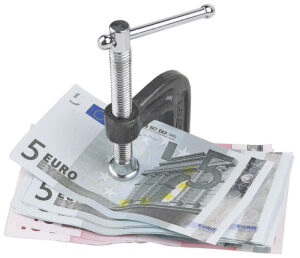
The overall economy of Europe is in big trouble. For the past three years, the European countries bound together by economics have been engaged in ongoing talks over the best way to solve current problems and devise solutions for the future. To understand what is happening, btw brings you a big-picture view.
The Brief History of the Euro

Before 1992, each of the countries that made up the continent of Europe had its own currency. This made doing business across the borders challenging because of exchange fees and trade barriers that stifled economic growth. In December 1991, twelve countries signed the Maastricht Treaty, which lead to the creation of the European Union. The EU is now made up of 28 countries.
Nearly a decade later, the EU adopted a monetary policy, under the control of a newly formed European Central Bank (ECB). The ECB created a unified currency called the Euro that went into effect on January 1, 1999. Nineteen of the EU countries adopted the Euro (with the others maintaining their former currency). Despite a shared monetary policy, each country has maintained control of its own fiscal policy. Monetary policy controls the money supply by determining how much money exists in the economy and the amount of interest rates. Fiscal policy determines how much a government collects in taxes and how much it spends.
What Happened?
Not all countries govern the same. When a government spends more than it collects in taxes, it must borrow money from another country. This is called sovereign debt and is not necessarily a bad thing. The idea is that the economy will grow at a faster rate than the debt acquired. Before the Euro, countries with less-stable economies (like Greece, Ireland, Portugal, Italy and Spain) were given a limit on how much they could borrow and charged high interest rates. Once part of the Euro Area, they were lumped together with countries with stable economies (like Germany and England) and allowed to borrow much more and at lower rates.

Throughout the 2000s, some EU countries borrowed and spent an excessive amount of money. Much of it went toward programs that politicians put forth in order to get elected. They repaid the debt with more borrowed money. The collapse of the housing market in the United States in 2008 caused ripples worldwide, beginning in Iceland. The countries could no longer borrow money, which means it could no longer fund its programs or pay back its debts. Because of they are linked together by the Euro, the economies of countries that loaned money become weaker.
Finding a Solution
Because Germany has the strongest economy in the EU, it agreed to help bail out the debtor countries. But the leaders insisted that austerity measures be attached to any agreement. These are conditions that the country must abide to ensure the problem doesn’t happen in the future. This usually means cuts in government spending. However, for many countries, governments are the biggest creators of jobs. If jobs are cut, that means less money is paid in taxes, thereby further reducing the amount of money the government brings in. Further complicating the issue are fundamental cultural and political differences between the countries involved.
What Now?
The Euro Zone countries met in Brussels for their annual summit. Topping the agenda of issues to address was a bailout deal for Greece, which is set to expire at the end of February. Greece’s newly elected Prime Minister Alexis Tsipras has asked that a new deal with easier terms be negotiated. Germany is not likely to approve. One area Greece believes can help make a difference is to crack down on big problems like corruption and tax evasion. On the other side, Greece’s creditors are looking for a solid plan for reform that can be supervised by a third party.
